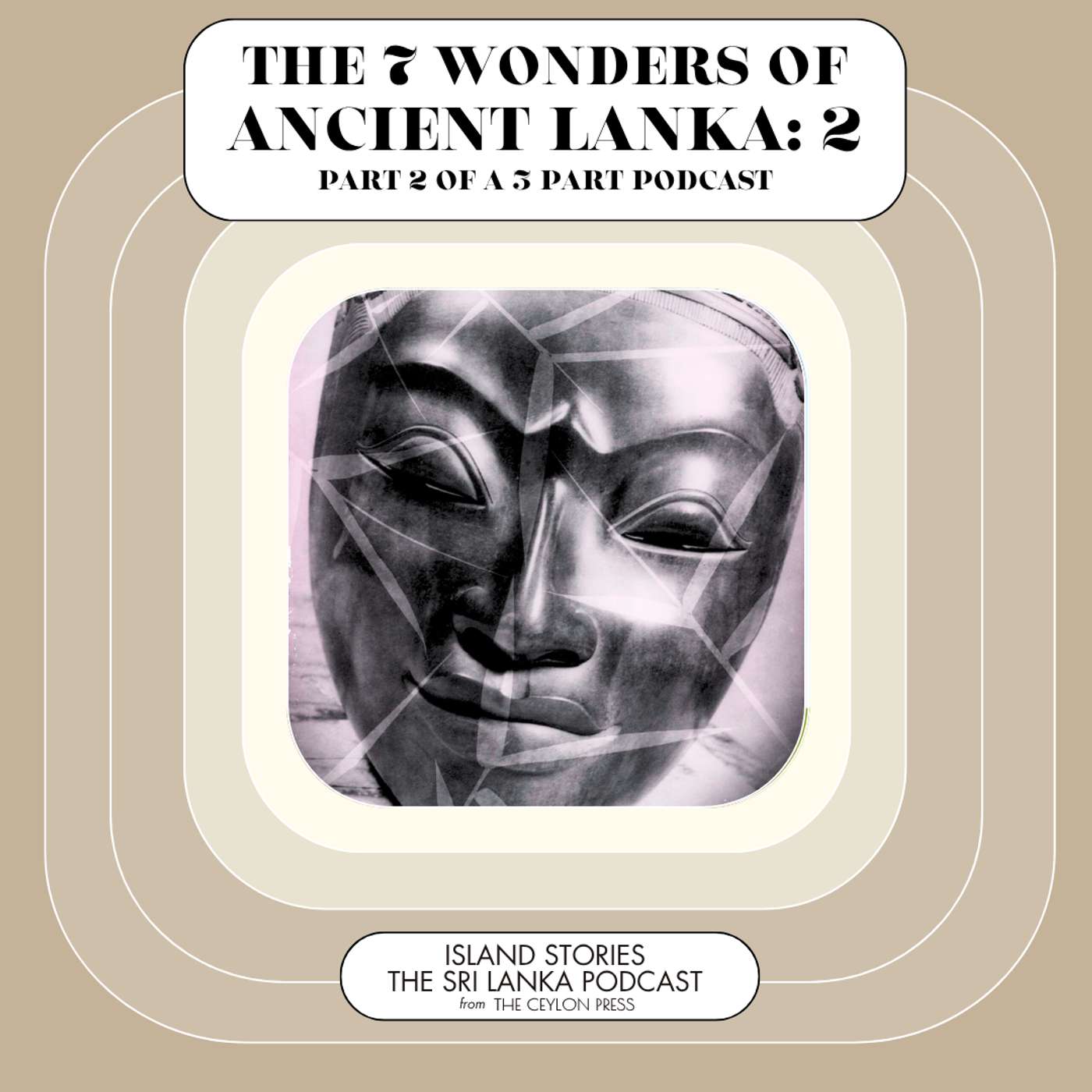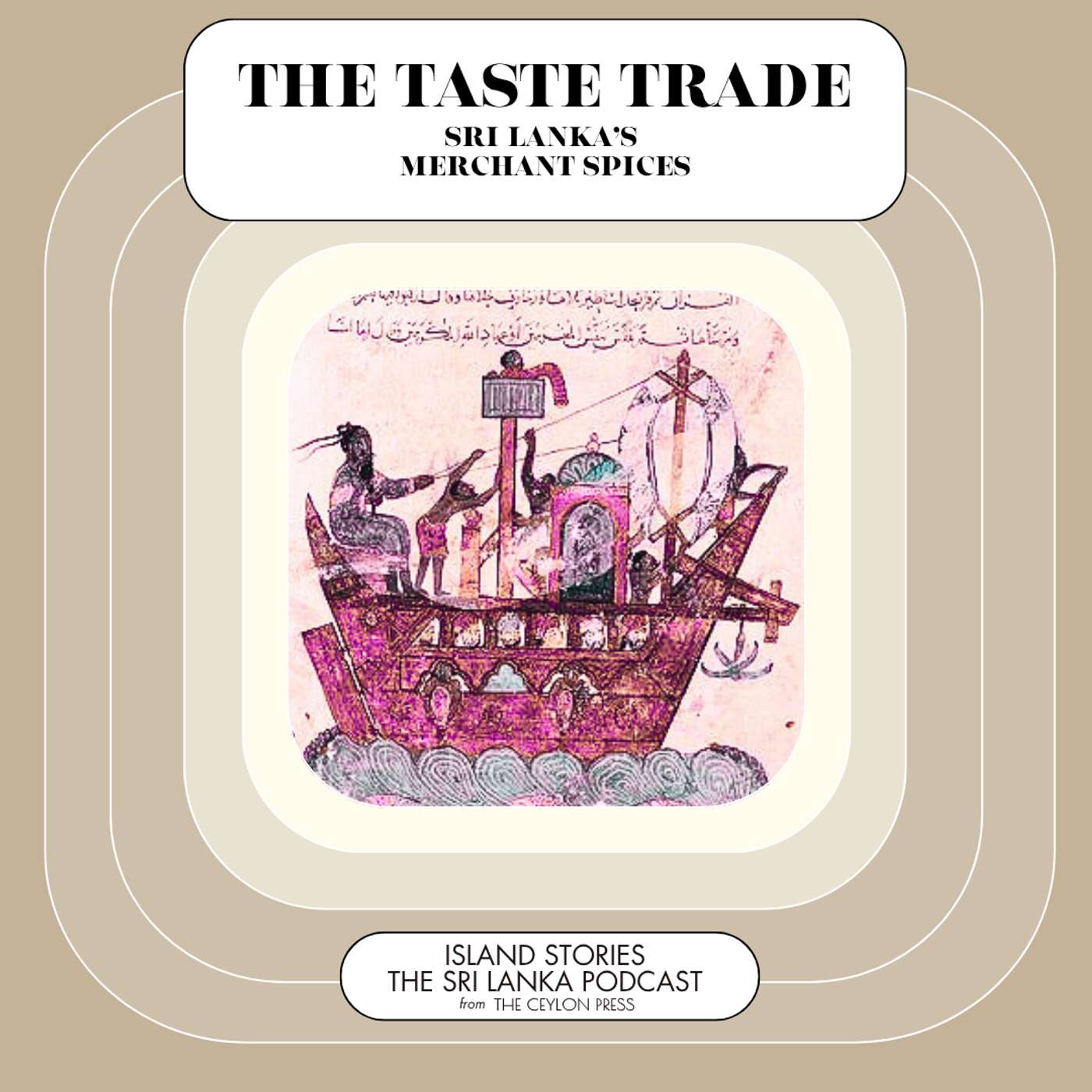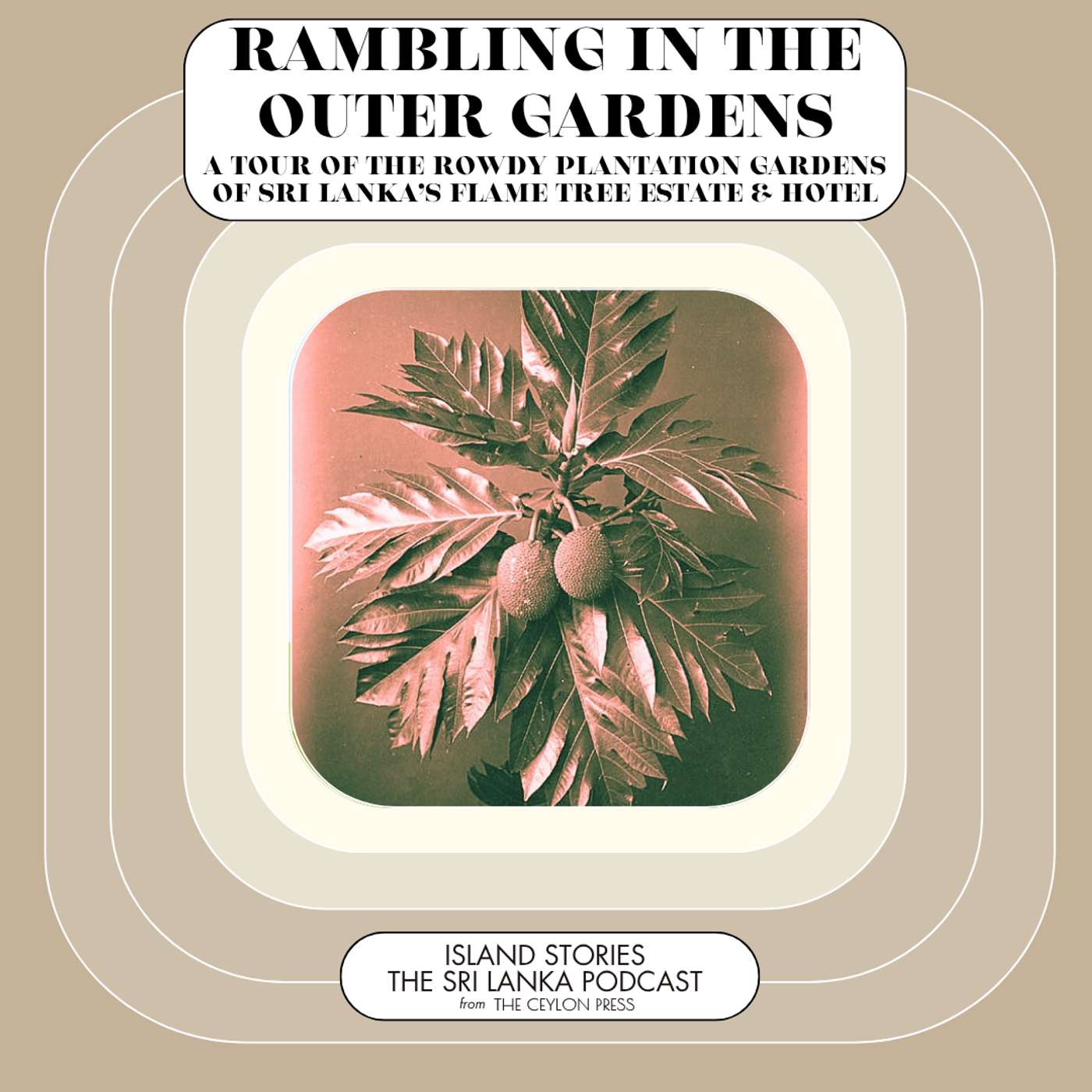Sri Lanka’s Secret Spices
Description
Beneath the glamours quills of cinnamon or vines of pepper, Sri Lanka’s two most dazzling indigenous spices, hide a clutch of others – the secret spices whose clandestine contribution to food and medicine is the subject of this podcast.
Many of Sri Lanka’s indigenous spices are barely known outside the island; indeed, so far as Tesco, Walmart or Carrefour go, they remain inscrutable, ingredients of electrifying mystery. But collectively, they may well have been what Virginia Woolf had in mind when as she sat for dinner with her husband, Leonard, the assistant government agent for the District of Hambantota - “one cannot think well, love well, sleep well, if one has not dined well." For Sri Lanka’s lesser known indigenous spices cast a distinctively captivating taste across its dishes.
The first of these reticent herbals is moringa, a short lived, fast growing, ten metre high tree, indigenous to India and Sri Lanka. It matures with good tempered ease, demanding merely tropical temperatures, water, and good drainage. Barely known outside Asia and Africa, it is a spice to covet. Every part of the plant is edible. Its leaves can be used in salads or boiled like spinach. Its flowers make a great tea and its seed pods, when young, present themselves as a rare alternative to asparagus. Its taste is grassy, a little bitter with an agreeable horseradish-like heat and flavour which explains why it is also known as the horseradish tree. According to several authoritative scientific studies of the plant, it is ridiculously healthy as well. Its dried leaves offer seven times the Vitamin C of oranges, nine times more protein than yoghurt, ten times more Vitamin A than carrots, and fifteen times the potassium of bananas.
It is widely used in Indian Ayurvedic medicine to mitigate heart disease and as anti-inflammatory, anti-cholesterol, antidepressant, and antioxidant. It may also help you see better and grow more luxuriant hair. The ancient Greeks used it in perfume. The Egyptian pharaohs depended on it for their complex death rituals. Warriors consumed it before battle. And with far less drama, it is widely used in Sri Lankan cooking and in many of the rice and curries made here on The Flame Tree Estate & Hotel. It is favourite addition to all things fish; and its stars with the greatest lustre in the island’s celebrated Spicy Drumstick Curry dish.
But if it’s a touch of fusion food you are really after, go down the moringa-as-asparagus route. Collect young tender pods around a foot in length before they become too woody. Trim them in smaller asparagus like-lengths, add onion, butter, and salt, and boil them for ten minutes. Then steam the pods in a marinade of oil, vinegar, sea salt, pepper, garlic, and parsley and enjoy them with all the sophisticated delight that made Louis XIV’s obsessive consumption of asparagus so memorable as to figure in every contemporary Versailles diary.
Another of the island’s lesser known spices is brindleberry – known here as Goraka, or to give it its full and formal Latin honorific, Garcinia gummi-gutta. It is the Lewis Carroll of the spice world for the White Rabbit must have had its mercilessly caustic taste in mind as he wandered through Wonderland: “The Queen of Hearts, she made some tarts, All on a summer day: The Knave of Hearts, he stole those tarts, And took them quite away!” It is a slow growing rainforest tree that reaches about twenty meters in height with dark shiny leaves and rough black bark. It is an unfussy plant, growing happily so long as it has its roots in deep, well drained, slightly acidic, light clay soil. In Ayurvedic medicine it is used to treat ulcers, and digestive problems. Western medicine is now busy studying its hydroxycitric acid content to better design medicines that increase fat burning whilst simultaneously reducing fat accumulation and appetite. Some scientists also believe it can be of use in managing cholesterol, stabilizing sugar levels, and protecting the body from cell damage.
Goraka fruit, which resembles doll’s house-sized pumpkins, are first dried before its flesh is used in place of lime or tamarind to give dishes, especially fish dishes, a distinctly tart taste. The fruit badly needs this pre preparation as it is otherwise far too acidic to be eaten raw. Its most famous island offering is in Ambulthiyal, the classic Sri Lankan sour fish curry where, as part of a mix of spices, it turns the fish meat as stylish black as the walls of a Soho literary cocktail bar.
Gotu Kola is another of the island’s demure indigenous spcies, something of a Mother Theresa amongst spices, awash with virtue and value. Known as pennywort or centella asiatica, it is a herby perennial vegetable, with small round leaves that bud off soft stems like a kind, apple-green version of watercress. It thrives in rich, moist soil, with plenty of shade and manure – the swampy edges of ponds are an especial favourite. The leaf has a subtle earthy taste, sweet and bitter at the same time and combines especially well with coconut. It is popular in traditional medicine where it is considered to promote life expectancy and good vision. Modern science is catching up on the beneficial effects of its principal compounds – especially triterpenoid saponin, a naturally occurring sugar. Studies suggest this has many applications: as antiviral to inhibit the replication of viruses like herpes; as an antioxidant; an anti-neoplastic to combat cancers; and to promote collagen production. Other studies are in progress to identify how it helps improve memory, and support blood circulation.
In Europe Gotu Kola has yet to make the leap from specialist natural food shop to supermarket but here in Sri Lanka almost any vegetable shop has it for sale. It stars in many island dishes, but the two most famous ones are as a sambal – a salad where it is combined with coconut, onions, lime, tomatoes, and pepper; and as a porridge. Kola Kanda, or Gotu Kola Herbal Rice Porridge, to give it its full and formal name, is a comfort food that is ridiculously easy to make. Red rice and a bit of garlic are boiled up. Gotu Kola and curry leaves are blended to dust, strained, and added, with coconut milk, to the cooked rice. The gorgeous green porridge is poured into breakfast bowls, and, served with a piece of sweet jaggery – and so begins a better day.
Curry leaves, the small pinnate leaves of the sweet neem tree is a commonplace ingredient in Sri Lanka and is no longer the Mr Quiet of the spice world, becoming ever better known outside of South and SE Asia and China. It has even made its first tentative appearance in such places as Sainsburys and Tesco. It is a very easy going plant, growing well from cuttings and root divisions and afraid of few, if any, animals. It reaches heights of around four meters quickly as long as it’s got decent sun. It puts up with all soil types as well as periods of prolonged dryness. It gives all the dishes it touches an earthy citrus-like flavour and a scent as if lemon grass and star anise had been twinned in some ecstatic horticultural coupling. It is especially delicious when fried with cashew nuts. Picked and used fresh off the tree, like basil in Italian cooking or marjoram in Greek dishes, there is almost no South Asian dish to which it cannot be added to deepen both flavour and scent. It has long been a staple ingredient Ayurvedic medicine to treat skin and hair problems and combat indigestion, bloating, and constipation. Westen science is studying its various chemical properties, especially its carbazole alkaloids, to improve cancer and anti-inflammatory therapies.
Despite the racial slur impli...
























